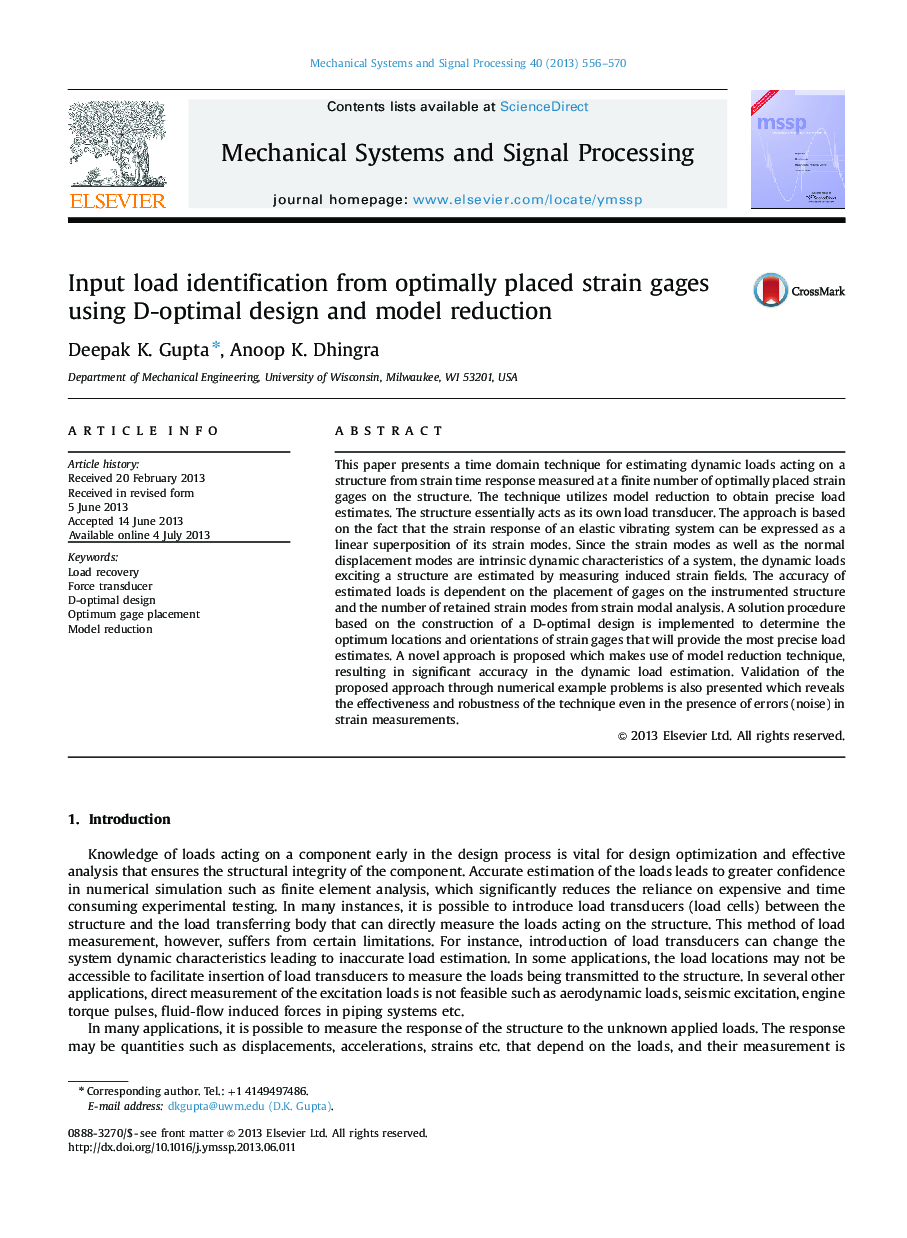| Article ID | Journal | Published Year | Pages | File Type |
|---|---|---|---|---|
| 559403 | Mechanical Systems and Signal Processing | 2013 | 15 Pages |
•Accuracy of estimated loads is dependent on the number and location of gages.•Accuracy of estimated loads is dependent on the number of available strain modes.•Best load estimate can be obtained by retaining all possible modes in the analysis.•Loads recovered from unreduced model are underestimated due to mode truncation.•Model reduction technique helps preclude error associated with mode truncation.
This paper presents a time domain technique for estimating dynamic loads acting on a structure from strain time response measured at a finite number of optimally placed strain gages on the structure. The technique utilizes model reduction to obtain precise load estimates. The structure essentially acts as its own load transducer. The approach is based on the fact that the strain response of an elastic vibrating system can be expressed as a linear superposition of its strain modes. Since the strain modes as well as the normal displacement modes are intrinsic dynamic characteristics of a system, the dynamic loads exciting a structure are estimated by measuring induced strain fields. The accuracy of estimated loads is dependent on the placement of gages on the instrumented structure and the number of retained strain modes from strain modal analysis. A solution procedure based on the construction of a D-optimal design is implemented to determine the optimum locations and orientations of strain gages that will provide the most precise load estimates. A novel approach is proposed which makes use of model reduction technique, resulting in significant accuracy in the dynamic load estimation. Validation of the proposed approach through numerical example problems is also presented which reveals the effectiveness and robustness of the technique even in the presence of errors (noise) in strain measurements.
